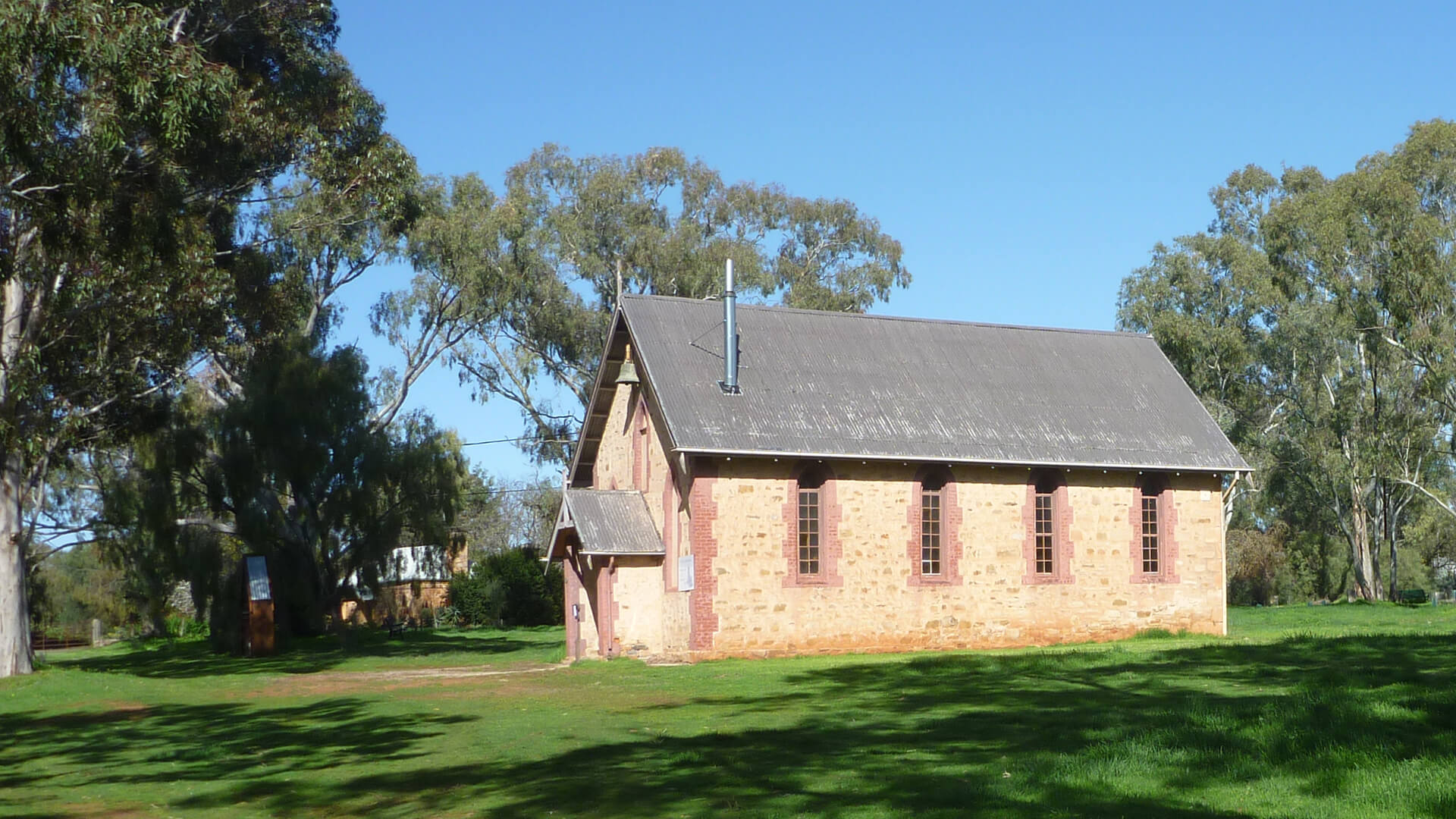A simple Victorian Gothic church comprising one room, porch, gable roof. It was originally built as a Primitive Methodist Chapel in 1859 which closed in 1893 and remained unused till its conversion to the Anglican Church in 1905.
In the Church of England Yearbook of 1894 it is noted that, “Great efforts have been made to re-establish a Sunday service at Mintaro, but hitherto without success. There are so few who would attend our church that they will not be responsible for the expense of renting a suitable building”. (1) Despite this apparent lack of enthusiasm, however, fortnightly services were eventually conducted in the Institute building from March, 1903, to August, 1905, by the Reverend Frank Sewell, Anglican Minister for Auburn and district.
“In the month of March, 1905, Rosina Forsyth Mortlock (wife of William Tennant Mortlock, owner of “Martindale” station) commenced the movement for providing a permanent building for church purposes.
In that month a meeting was called by the Rev. F. Sewell, presided over by the Archdeacon of the district, the Ven. Archdeacon Russell, at which it was decided to purchase an old disused protestant meeting house, which had been used originally by the Primitive Methodist sect, now unrepresented in the village”.(2) The church and land (including a four-roomed house and stable, later demolished to build a small Sunday school, which was itself demolished sometime between 1972 and 1981) was then bought from a Mr. Sydney Torr at a cost of ninety pounds. “A contract was entered into with Mr. Arthur of Manoora to make good the structure, to alter certain arrangements, and to erect others according to plans furnished by the Rev. W. Eugene Perrin, Rector of Unley”.(3)
The restoration of the Church cost one hundred and twenty one pounds seventeen shillings with furnishings at thirty nine pounds nine shillings; the dedication took place on 17 August, 1905, and the church was renamed after the patron saint of St. Peter. The Mortlocks strongly supported the establishment of the church including the donation of numerous embelishments such as the altar candlesticks, and altar paintings added in 1914. Evidence suggests that without the instigation of the Mortlocks, the Anglican church may well have decided not to acquire the old Primitive Methodist chapel. In effect this building has a two-fold historical significance, being linked with the growth of Methodism in Mintaro in the 1850s and 1860s, and also, in latter times, illustrating the social influence of the large pastoralists in the district who by and large supported the Anglican faith because of their “social station”.
Sources
Vestry Record in St. John’s Anglican Church, Mintaro. (2) and (3).
1894 Church of England Yearbook Page 335 (1)
“Methodism in Auburn and District”, Rev. Ian Paull, 1961 Page 13.
— quoted from Mintaro Conservation Study[1]
NOTES
1. Mintaro conservation study, McDougall & Vines (Architectural & Heritage Consultants), Norwood, South Australia, 1988.

